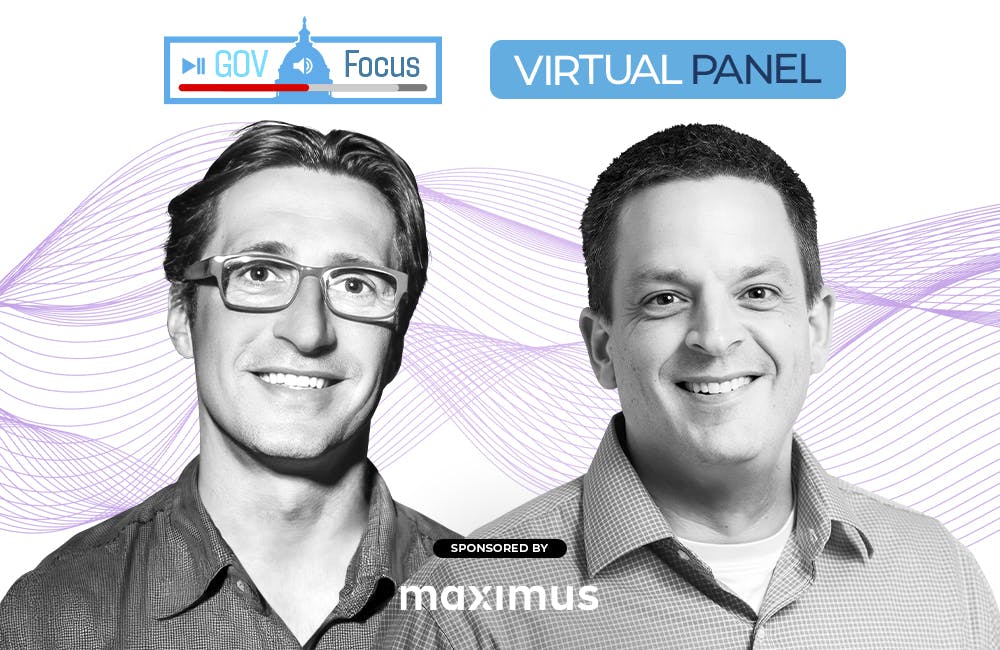Creating a Culture of Change Begins with Technology, Workforce

Despite their differing missions, the Defense Health Agency and General Services Administration share many efforts to improve the IT infrastructure of their respective agencies.
One focus of DHA’s IT modernization efforts is interoperability, particularly in management and administration, said DHA Assistant Director for Combat Support Maj. Gen. Lee E. Payne at the GovernmentCIO Tech Futures event May 9. MHS Genesis, DHA’s new electronic health record, was also purchased by the VA in 2017. Payne noted the significance in which having DHA and VA use the same record has on daily operations.
“The fact that 60% of our care is done in the network … we need to get that information to our clinicians as we move patients in and out of the network care.” An electronic health record should be used as a tool rather than a barrier to safe, high-quality care, he added.
Additionally, the impact the two agencies could have on the greater healthcare system is apparent, Payne noted.
“When we get finished with this, both in the DOD and the VA, 20 million beneficiaries will be under our care,” he said. “We’re not only going to be able to influence the health care record marketplace, we’re going to influence the medical device marketplace, and I believe we may have a chance to influence healthcare in this nation.”
The VA is also moving in the direction of adopting the Medical Community of Interest (Med-COI), a virtual private network service provided by DISA, which DHA is pushing across the DOD enterprise to all of its facilities.
Another aspect of interoperability relies on standardization. Payne echoed the words of Acting Secretary of Defense Patrick Shanahan, “Rigorous adherence to standards unlocks creativity and innovation.” In other words, Payne said, “If you don’t know where your process is or where your workflow is … it’s really challenging to improve it.”
While standardizing the DHA workflow, “so much unwanted variation” was discovered among hospitals and services. Payne emphasized that workflows must be the same in a cloud-based system. Eventually, all of the agency’s data along with the VA’s will be in a platform called Healthy Intent within Cerner Millennium, the medical suite application of MHS Genesis.
GSA is also looking at cloud acceleration, in addition to what Deputy CIO Beth Killoran believes are the “true technology accelerator:” artificial intelligence and machine learning. She explained robotic process automation isn’t the answer “because that’s really helping to modify and automate your business process.”
Killoran uttered what many advocates for emerging tech have in regard to AI and machine learning. “How are we looking at technology … to do your low-value work, the things that maybe are taking a good chunk of your time today, but really [are] not adding value to your life or not adding value to the overall mission?”
By evaluating this question and implementing new technologies into a workflow, organizations can relieve employees of administrative or other burdens that take away time and energy from their analytical work.
When it comes to integrating new technologies at GSA, the agency operates according to the “fail fast, fail forward” Silicon Valley-inspired mantra.
“At GSA, that’s really where we have been investing and looking at … figuring out how we start pockets, build on some pilots and some initial projects and technology that we can, learn from it, and then catapult very quickly forward,” said Killoran.
At the core of change implementation, however, is workforce training. Both Payne and Killoran agreed there can never be enough change management and training within an organization.
“It’s about communication. It’s about sharing information with key stakeholders and making sure you’re touching all the right people. So, we’re redoubling our efforts on change management,” said Payne. DHA has found training by means of peer experts to be an effective method.
Killoran acknowledged that not all employees will be on board with changing the technology system they use to conduct their work, but they cannot be left behind or else the system of change won’t sustain.
“There’s got to be different levels of engagements based on the populations. And having some of those folks that are both, at the early adopters and at the far end, the laggards, having them part of those requirements, the testing and the actual process to move it forward will actually make a cultural shift,” she said.
This is a carousel with manually rotating slides. Use Next and Previous buttons to navigate or jump to a slide with the slide dots
-

Navy Memo Maps Tech Priorities for the Future Fight
Acting CTO’s memo outlines critical investment areas, from AI and quantum to cyber and space, as part of an accelerated modernization push.
5m read -

DOD Can No Longer Assume Superiority in Digital Warfare, Officials Warn
The DOD must make concerted efforts to address cyber vulnerabilities to maintain the tactical edge, military leaders said at HammerCon 2025.
4m read -

New NSF Program Cultivates the Future of NextG Networks
The agency’s new VINES program looks to tackle key challenges like energy efficiency and future-proofing wireless tech.
21m watch -

Marine Corps Operation StormBreaker Slashes Software Delivery Timelines by 17x
New program aims to deliver critical digital capabilities to warfighters at the "speed of relevance" by overhauling traditional processes.
4m read -

Tracking CIOs in Trump's Second Term
Stay informed on the latest shifts in federal technology leadership as new CIOs are appointed and President Trump's second term takes shape.
6m read -

DHA CDAO Spearheads Master Data Catalog to Boost Transparency
Jesus Caban plans to boost DHA's data maturity through a new master data catalog, governance frameworks and inventory of tech tools.
5m read -

IHS Prepares to Deploy PATH EHR at Pilot Sites in 2026
IHS targets PATH EHR pilot in 2026, emphasizing governance, collaboration and interoperability as key pillars of the modernization strategy.
4m read -

Trump Orders Spark Government-Wide Acquisition Overhaul
As Trump pushes for a faster, simpler procurement system, agencies are leveraging AI and adapting strategies to meet new requirements.
5m read -

IRS Makes Direct File Code Public as Lawmakers Debate Program’s Fate
The agency sees the Direct File source code as beneficial to government digital services despite what happens with it in proposed budgets.
5m read -

Inside Oak Ridge National Lab’s Pioneer Approach to AI
Energy Department’s Oak Ridge National Lab transforms AI vulnerabilities into strategic opportunities for national defense.
22m listen -

A Look at Federal Zero Trust Transformation
Recent developments from CISA and DOD show how government is advancing zero trust quickly.
20m read -

Modernization Strategies to Enable Energy Innovation
Lawrence Berkeley National Lab and Maximus experts explore the modernization strategies driving digital transformation and operational resilience within the energy sector.
33m watch
















